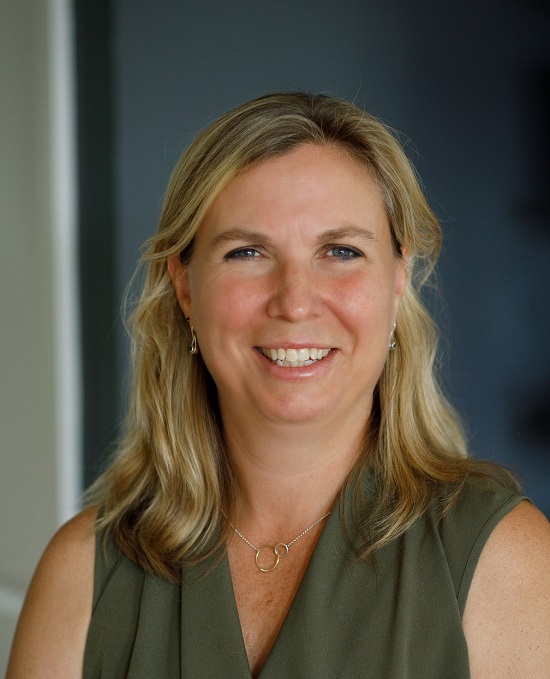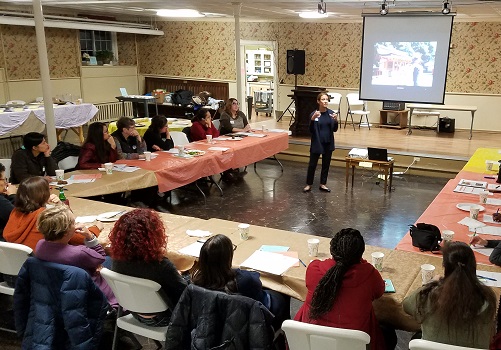Working for Women (W4W) was launched with the goal of helping women gain economic independence. To do so, they’ve adopted a dual mission – to enable businesses to be a force for social good and to elevate women in the workforce. Essentially, they make it easy for businesses to support women’s empowerment by helping them find the right corporate volunteer opportunities and build relationships with nonprofits focused on the entry, training, education and support of all women in the workforce.
SEE Change recently sat down with founder Beth Bengtson to discuss the relatively new venture, its vision and how she’s enabling win-win-win-wins for businesses, employees, nonprofits and women.
What inspired you to start Working for Women?
I believe observing and listening to women is the key to developing strategies to elevate the economic status of women in the U.S. I volunteered directly with women through local organizations and mission trips around the world. I found women living in poverty have tremendous strength and skill. They do not need handouts; they need support. I know there are many organizations working to alleviate the struggles of economically disadvantaged women, and they all have one thing in common: they need resources.
As founder and CEO of Working for Women, I’m committed to using the power of business to do social good for just such organizations in the U.S. My vision is that all women have the opportunity for economic independence. My business career has shown the power and possibility when you are able to apply the resources of the business world to help nonprofits grow their organizations.
What is the challenge that you’re trying to tackle and why?
Consider this: In 2015, one in eight women in the U.S. and nearly one in five children lived in poverty, with over half living in women-led families. According to the National Women’s Law Center, more than one in three female-headed families with children were poor in 2016 (versus 17.3 percent of male-headed households). What’s more, poverty rates were higher for women who headed families if they were black (38.8 percent) or Latina (40.8 percent).
To make matters worse, many of those women lack support networks to whom they could turn. I always ask, “What kind of role models are we creating?” It’s so much harder to get out of poverty and break those cycles without that support. Keep in mind that only 1 percent of philanthropic giving goes toward the advancement of women and girls and less than 2.5 percent of all venture capital goes to women, even less to women of color.
That statistic is all the more glaring considering the many studies that demonstrate that investing in women and girls is one of the smartest investments you can make.
How does W4W actually work?
Working for Women is unique in the model we have. We facilitate relationships between businesses committed to affecting social change for women with nonprofits focused on supporting the success of underserved women in the workforce. Through the Working for Women model, businesses provide financial and skill-based contributions so nonprofits can expand their capacity to serve more women.
Why would a corporate partner want to get involved?
Businesses can multiply their Impact by pooling their resources with other businesses to create lasting impact while attracting and retaining employees and customers.
For example, global consulting firm, ZS, engaged with W4W in an effort to to explore new ways of engaging its workforce in a deeper relationship with the company. They wanted to effect turnover rate among women in the company. W4W customized engagement that matched ZS’ers skill sets with the nonprofits’ specific needs, and vice versa, resulting in a program that was mutually beneficial for everyone.
What’s your vision, and definition, of success for W4W?
Working for Women’s vision is for all women to achieve economic independence. We pursue this through a dual mission to elevate women in the workforce AND enable businesses to be a force for social good. Success for us is defined by having more women entering and staying in the workforce thus achieving economic independence and more businesses giving back.
Any lessons learned for entrepreneurs launching ventures in this space?
Know the difference between patience and persistence and when to employ each. It is going to take longer than you would like to get where you want BUT if you have a strong vision and keep focusing on the next task in front of you, you will get there. In starting a business these days, I strongly advise you to consider what your business’s purpose should be, aside from being viable and profitable, of course.
To learn more about Working for Women, visit https://www.workingforwomen.org/


